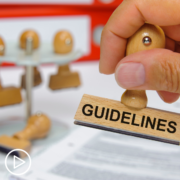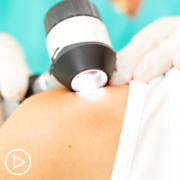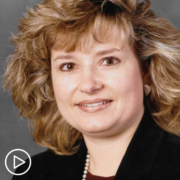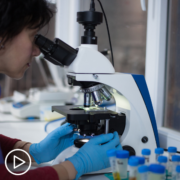Who Are the Members of a Head and Neck Cancer Care Team?
Who Are the Members of a Head and Neck Cancer Care Team? from Patient Empowerment Network on Vimeo.
Head and neck cancer care may involve a whole team of healthcare providers, but who are they? Expert Dr. Ari Rosenberg discusses the various team members and their roles in patient care.
Dr. Ari Rosenberg is a medical oncologist and Assistant Professor of Medicine at the University of Chicago Medicine. Learn more about Dr. Rosenberg.
See More From The Pro-Active Head and Neck Cancer Patient Toolkit
Related Programs:
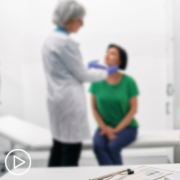
|

|
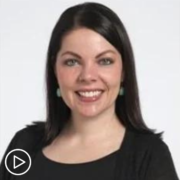
Expert Advice for Newly Diagnosed Head and Neck Cancer Patients |
Transcript:
Katherine:
There can be a number of people on a head and neck cancer patient’s care team. Would you give us an overview of who these team members might be, and what their roles are?
Dr. Rosenberg:
Yeah, absolutely. And this is one thing, actually, that I enjoy about treating head and neck cancer which is that because of the complexity of the head and neck in general, cancers that arise really do require a multidisciplinary team to figure out what the best treatment approach is.
And not only that, but most of the treatment plans that we incorporate for the treatment of head and neck cancer involve a very large and robust support team that provide different perspectives and help in optimizing outcomes for patients.
So, the three types of oncologists in our program, for example, all new patients that come in meet all three of these types of oncologists. So, one is an ENT, or a head and neck oncologist, or a head and neck surgeon, that’s one important member of the team. The second is a radiation oncologist. So, a radiation oncologist is the team member that uses radiation to treat head and neck cancer. And the third is someone like myself, a medical oncologist. We’re the ones that do the chemotherapy, or other types of systemic therapy, or other types of things like that.
And those are really the three tools, and the three oncologists that use those tools to figure out what the best treatment approach is. However, because many of the treatments that we give, whether it’s surgical treatment, or whether it’s some combination of chemotherapy and radiation, or of chemoradiation, there are many side effects of treatment. And as such, there are many other team members that are involved in supporting patients and optimizing outcomes through any of those treatment modalities.
So, that oftentimes involves specialized nursing, speech and swallow doctors and pathologists, dentistry, and prosthodontics. Sometimes other types of surgeons are involved, like neurosurgeons, or skull-based surgeons, or nasopharynx surgeons as well.
As well as nutrition and dietician, physical therapy, psychosocial supportive services. I’m probably missing many, but on and on, really are all involved in the care of patients during treatment. And not only that, but even in the non-patient facing side, there are other team members also that are very important that a patient may not meet, such as the pathologists that help us determine the subtype of the cancer, whether it’s HPV related or not. Sometimes some of the genomic makers and things like that that can be very important, or immune markers that are very important for treatment decisions.
We have radiologists that have expertise in the head and neck space that help us determine exactly the extent of the disease and look at the imaging in a multidisciplinary fashion. Again, I probably missed some of the team members offhand, but yes, it’s definitely a team sport, which is really, really important.



